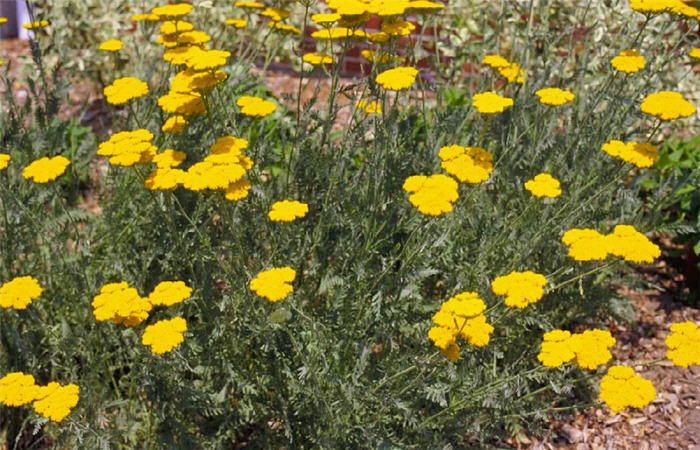| Botanical Name: Achillea filipendulina 'Cloth of Gold' | |
| Common Name: Cloth of Gold Yarrow |

-
Anatomy
-
Culture
-
Design
Plant Type
Perennial
Height Range
3-6'
Flower Color
Yellow
Flower Season
Summer
Leaf Color
Dark Green
Bark Color
n/a
Fruit Color
n/a
Fruit Season
n/a
Sun
Full
Water
Low
Growth Rate
Fast
Soil Type
Sandy, Clay, Loam, Rocky, Unparticular
Soil Condition
Average, Poor, Well-drained, Dry
Soil pH
Neutral
Adverse Factors
Invasive
Design Styles
English Cottage, Meadow, Mediterranean, Ranch, Spanish, Woodland
Accenting Features
Showy Flowers, Unusual Foliage
Seasonal Interest
Spring, Summer, Fall
Location Uses
Perennial Border, Walls / Fences
Special Uses
Container, Cut Flowers, Filler, Mass Planting, Fire Resistant, Naturalizing
Attracts Wildlife
Birds, Butterflies
Information by: Stephanie Duer
Photographer: JJ Neilson Arboretum
Photographer: JJ Neilson Arboretum
-
Description
-
Notes
'Cloth of Gold' is a yarrow cultivar with a stiff, erect habit, growing about 3 to 4 feet tall and about half as wide. It has elegant, deeply-cut, fern-like, deep green leaves. Foliage has a spicy odor when crushed. Flowers are yellow, plate-like, dense, clusters. Good as a cut or dried flower. Long summer bloom period may be extended by prompt removal of faded flower heads. An impressive perennial for a sunny border.
Many different cultivars of Yarrow are available, with different flower colors, including yellows, reds, peaches, and pinks. Yarrow makes a good ground cover when mowed, and tolerates a fair amount of foot traffic. Divide in the spring every few years as the centers can sometimes melt out. Grow in full sun to part shade in well drained soils. Tolerates clay soils. Yarrows are best not planted next to slower-growing and smaller perennials, as they may overtake and overwhelm them.